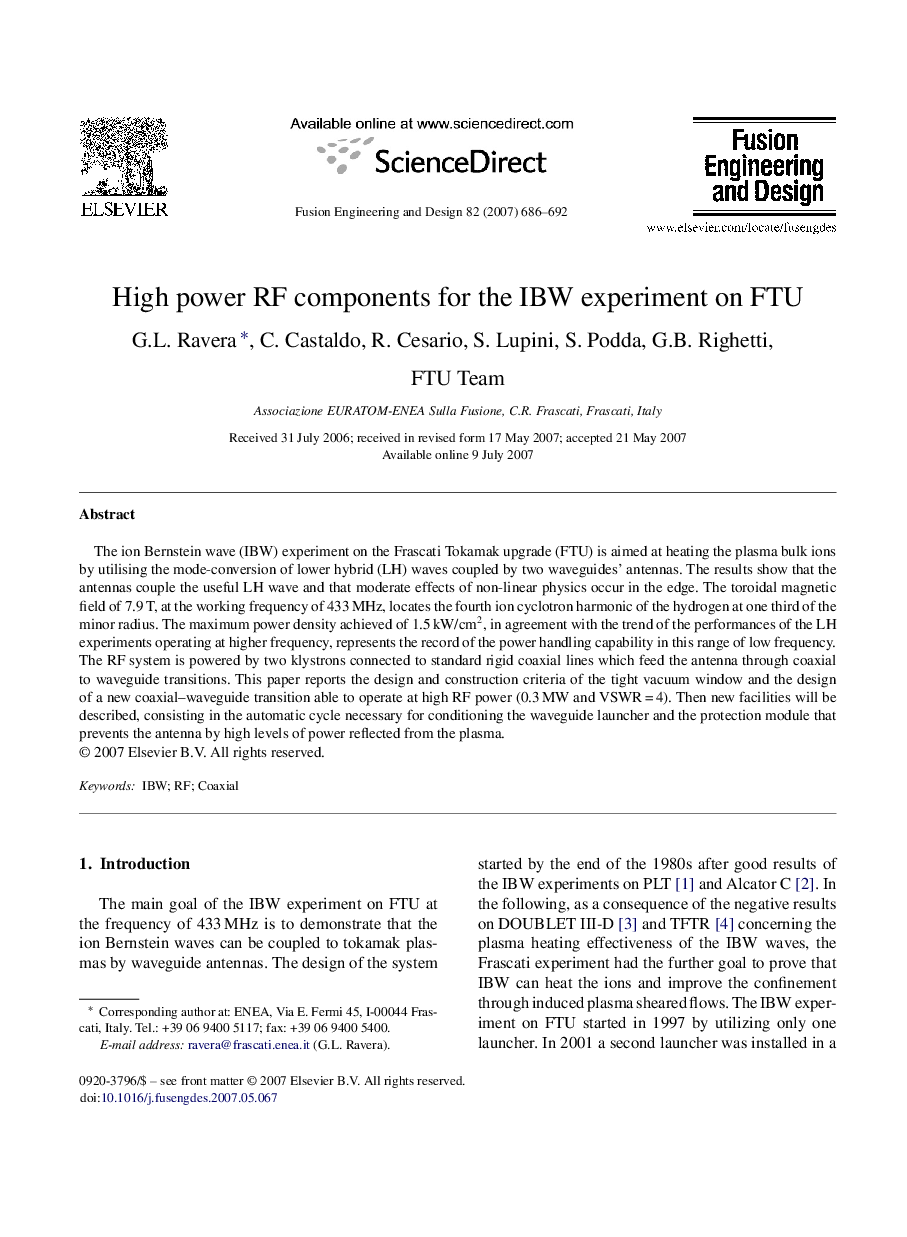| Article ID | Journal | Published Year | Pages | File Type |
|---|---|---|---|---|
| 273238 | Fusion Engineering and Design | 2007 | 7 Pages |
Abstract
The ion Bernstein wave (IBW) experiment on the Frascati Tokamak upgrade (FTU) is aimed at heating the plasma bulk ions by utilising the mode-conversion of lower hybrid (LH) waves coupled by two waveguides' antennas. The results show that the antennas couple the useful LH wave and that moderate effects of non-linear physics occur in the edge. The toroidal magnetic field of 7.9Â T, at the working frequency of 433Â MHz, locates the fourth ion cyclotron harmonic of the hydrogen at one third of the minor radius. The maximum power density achieved of 1.5Â kW/cm2, in agreement with the trend of the performances of the LH experiments operating at higher frequency, represents the record of the power handling capability in this range of low frequency. The RF system is powered by two klystrons connected to standard rigid coaxial lines which feed the antenna through coaxial to waveguide transitions. This paper reports the design and construction criteria of the tight vacuum window and the design of a new coaxial-waveguide transition able to operate at high RF power (0.3Â MW and VSWRÂ =Â 4). Then new facilities will be described, consisting in the automatic cycle necessary for conditioning the waveguide launcher and the protection module that prevents the antenna by high levels of power reflected from the plasma.
Related Topics
Physical Sciences and Engineering
Energy
Energy Engineering and Power Technology
Authors
G.L. Ravera, C. Castaldo, R. Cesario, S. Lupini, S. Podda, G.B. Righetti, FTU Team FTU Team,
